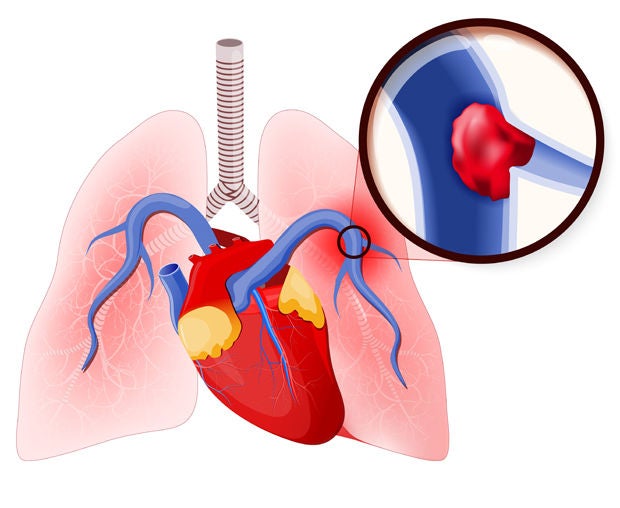SingHealth Institutions will NEVER ask you to transfer money over a call. If in doubt, call the 24/7 ScamShield helpline at 1799, or visit the ScamShield website at www.scamshield.gov.sg.

More than 70 patients have benefitted from the Pulmonary Embolism Response Team which brings different specialties together to treat the condition which can lead to acute heart failure or even death.
When a blood clot travels to an artery in the lungs, it can lead to acute heart failure or even death. To minimize the time to diagnosis and life-saving treatment, SGH has developed the Pulmonary Embolism Response Team, PERT, to expedite care for patients with severe PE.
Since its inception in November 2021, the multi-disciplinary PERT has been activated more than 70 times, potentially saving the lives of these patients.
Why is rapid response essential?
"Pulmonary Embolism (PE) occurs when a blood clot develops in a blood vessel, often in veins of the legs, and travels to a lung artery (pulmonary artery). In severe cases of acute pulmonary embolism, there can be a sudden increase in the pressures within the pulmonary arteries; the pressure overload can lead to acute right heart failure, or even death," explained Dr Kristen Lee, Consultant, Department of Vascular and Interventional Radiology, one of the PERT team members.
Which patients benefit from PERT?
PERT is activated for PE patients who demonstrate any of the following signs: 1) sustained hypotension; 2) requirement of inotrope support; 3) right ventricular enlargement or function impairment as demonstrated by imaging or laboratory findings.
"The PERT service is designed for management of PE patients with varying degrees of right heart dysfunction as they are at high risk of imminent deterioration or demise. This group of patients often require escalated levels of care, and sometimes, interventions beyond anticoagulation," said Dr Lee.
Why is it a multi-disciplinary service?
"Before PERT was established, a common scenario was that the primary medical team had to talk to five different groups of specialists for the different types of interventions. During this process, there may be gaps in coordination and fragmentation of care. A consolidated multidisciplinary management is essential and that is the concept of a PE response team, added Dr Cheong May Anne, Associate Consultant, Department of Haematology.
The multi-disciplinary core team is staffed by six specialties - Respiratory & Critical Care Medicine (RCCM), Surgical Intensive Care Unit (SICU), Interventional Radiology (VIR), Haematology, Cardiothoracic Surgery (CTS) and Cardiology.
How does the PERT team work together?
There are more than 200 senior residents and consultants in the team. Within this group, the on-duty team members will be activated via a secure hospital group chat. Upon activation, the on-duty representatives from each specialty will convene and review patient history, clinical presentation and advise on further management. Senior residents and consultants from RCCM and SICU will be in charge of the overall escalated level of care and ICU management of the patient.
The Haematology team will optimize the anti-coagulation regiment for the patient. VIR team offers minimally invasive advanced interventions for patients requiring rapid extraction of clot beyond anti-coagulation.
CTS team offers ECMO (extracorporeal membrane oxygenation) implantation for patients who are critically-ill and any surgical intervention if necessary. Finally, our cardiology team will assist in advanced cardiac imaging and cardiac care.
Following discharge, the patients will be followed up at the thrombosis clinic run by Haematology team; and if necessary, refer to the Cardiology team managing patients with pulmonary hypertension (as sequelae of severe pulmonary embolism).
What’s next for PERT?
Dr Lee shared, "The next phase for PERT is to ensure awareness of the service across various disciplines at SGH, such that all patients can receive timely care when severe PE is diagnosed. In particular, we need to engage teams caring for cancer patients and post-surgical patients, as these patients are at a higher risk to developing blood clots."
Keep Healthy With
© 2025 SingHealth Group. All Rights Reserved.



















